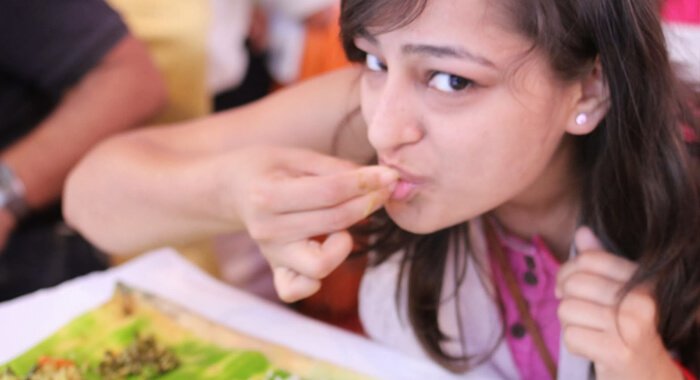
Have you ever had the chance to eat the typical South Indian “Sadya” along with one of your Malayali friends? It is more like a ‘Thali’, but here yu will not be given any plates, but rather banana leaves. However, when it comes to eating, you would be taken aback by the way they eat because they use their hand. The Vedic wisdom behind it is that eating food with your hands feeds both the body and mind. This will not be achieved when you eat food with spoon and fork.
–
–
You just can’t say Keralites, but traditionally all the Indians eat with their hands however the experience and its values have been levitated to a gastronomic art by the chefs at Vivanta by Taj Bekal, which is a scenic 26-acre resort in the northern Kasaragod district of Kerala.
–
PUTTU/ STEAMED RICE CAKE-Banana- Peas Curry
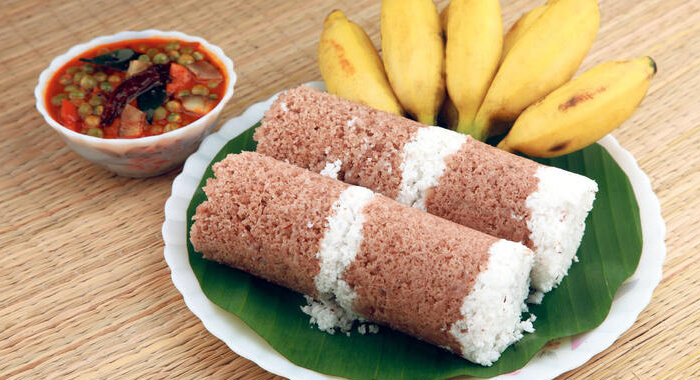
–
In order to lend logic to the eating-by-hand practice, the maitre d’hotel places before each guest at Latitude, which is a multi-cuisine restaurant, with a stress on regional Kerala cuisine and a scenic view of serene waters captured in a printed paper, the “Vedic wisdom behind eating with your hands”. The paper explains that our hands and feet are supposed to be the channels of the five elements.
The Ayurvedic books explain that each finger is an extension of one of the five elements. The little finger is jal or water, ring finger is Prithvi or earth, the middle finger is Akash or ether which is the tiny inter cellular spaces in the human body, the forefinger is Vayu or air and the thumb is Agni or the fire. You must have seen kids sucking their thumb; this is nature’s way of helping the digestion at an age when they are incapable of chewing.
–
Kozhikoden BIRIYANI
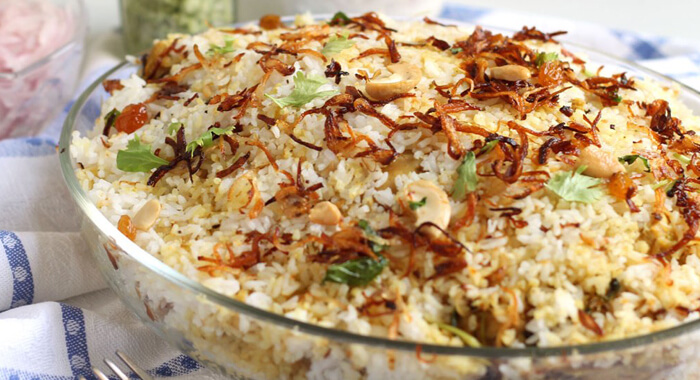
–
Ashok Pillai, the executive sous chef, says that the ‘banana leaf experience’ has been redefined by the hotel from the traditional ‘sadya’, or banquet, in Malayalam. A traditional sadya is a vegetarian meal, which is served on a banana leaf during festivals, marriages or any other special occasions. All the dishes are eaten with hands. A sadya usually consists of around 24-28 dishes which are served as a single course. It is usually served for lunch and is quite a filling for the stomach. The preparations for the sadya begin at dawn, and the dishes are prepared before 10 in the morning on the day of the festival. Samir Khanna, the affable general manager, at Vivanta by Taj at Bekel, says that they have given a twist to the experience by combining delicious preparation of meat or fish as per customers request.
–
COOKED RICE
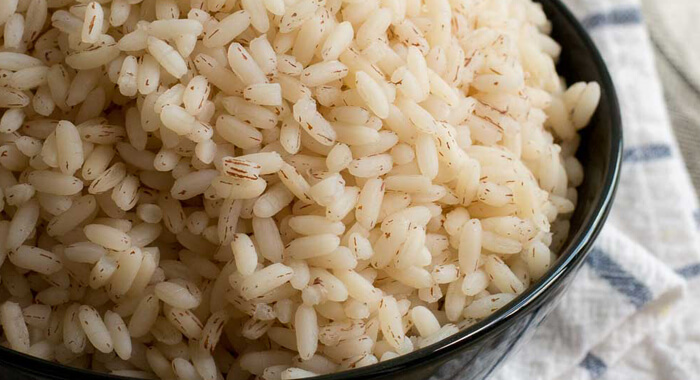
–
Navara is the centrepiece of a Sadya. It is a medicinal rice type, that is one of the local genetic resources of Kerala. It is famous for its use in Ayurveda. Navara is used as a health food or as nutritional rice and is supposed to be therapeutic for diseases such as paralysis, ulcers, arthritis, urinary tract infections, and neurological disorders. Since the “experience” needs some preparation, those guests who would like to participate need to hint the chef firsthand. The tables are laid out individually in the restaurant for those who are eating on the banana leaf.
–
Kerala SADYA
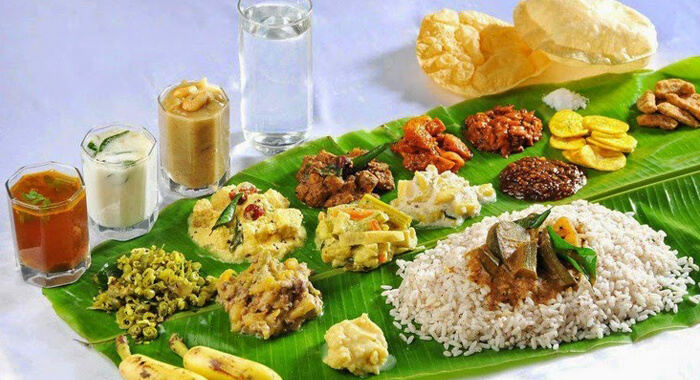
–
So what is it that you get in a typical sadya menu? Banana Chips, Jagerry Chips, Achar, Kerala Pappadom, Parippu Curry (Simmered lentils enhanced with ghee), Pachadi (Preserved cucumber in Yoghurt), Inchi Puli (An emulsion of tamarind, jaggery and ginger) are served first. And then you have Kichadi (Coconut enriched gravy with pineapple), Erissery (Mashed Pumpkins and red beans in coconut), Kaalan (Raw banana cooked in mildly spiced coarse coconut), Olan (White pumpkin simmered with beans in coconut milk), Avial (Ethnic vegetable cooked dry with coarsely ground coconut and yoghurt), Thoran (Any local vegetable cooked dry with coarsely ground coconut) and Kootu Curry (Assortment of vegetables and spices). Sambar (Stew of lentil and vegetables) will be served as the main curry and other than that, you will also have Pulissery (Tempered yoghurt with turmeric with curry leaf infusion), Pachamoru (Spiced buttermilk). As dessert, you will have Banana Payasam (Dessert with jaggery, coconut milk flavoured with cardamom)
–
Vermicelli Payasam
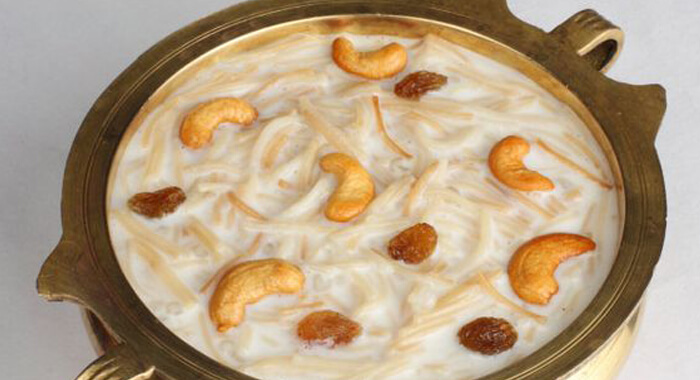
–
Other Recipes include Paal Payasam, Thenga Choru, Kerala Fried Prawns, Meen Molee with Steamed Rice, Kozhikodan Biryani, Malabari Parotta, Kerala Vegetable Stew and Kerala Chicken Roast.
–
Kerala Crab Roast
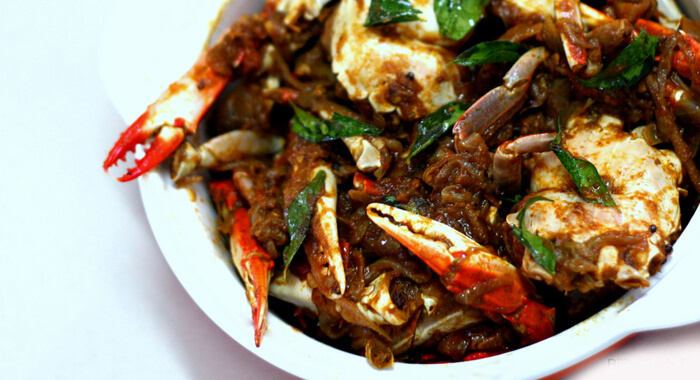
–
Kerala Fish Fry
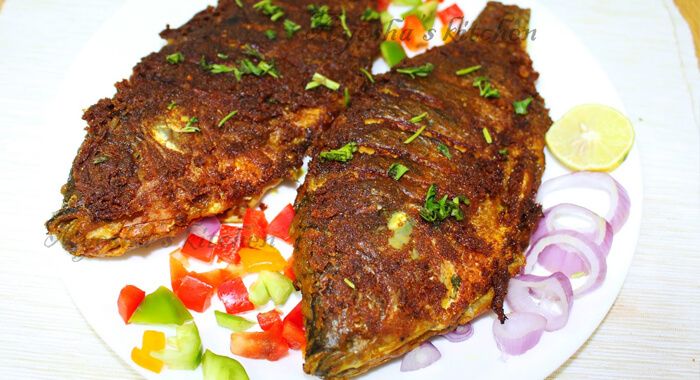
–
Kerala Style Tapioca-Fish Curry
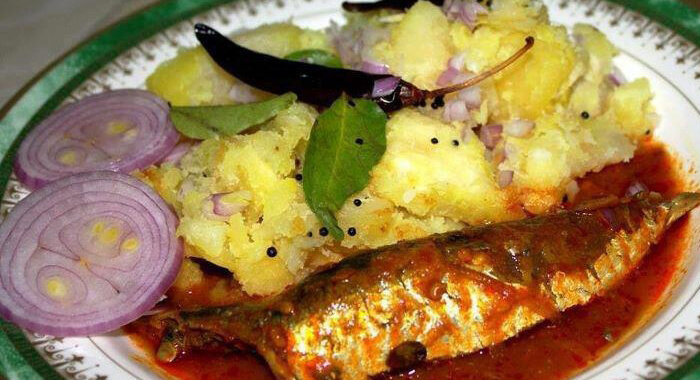
–
Nool Appam- Kerala Fish Fry-Pathiri
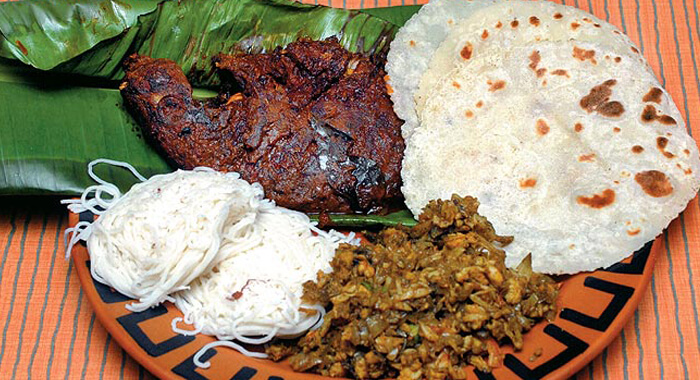
–
Kerala Chicken Roast
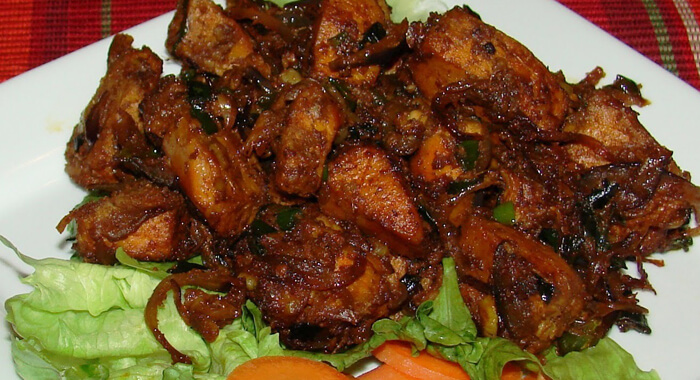
–